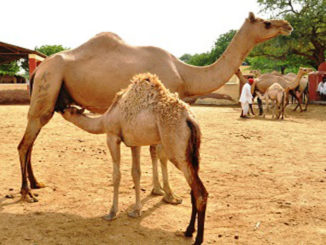Anti diabetic
- The antidiabetic properties of camel milk are thought to be due to a number of factors
- High content of insulin-like growth factor 1 (IGF-1)
- Low glycemic index
- High antioxidant content
IGF-1 is a hormone that helps the body to use glucose more effectively. The low glycemic index of camel milk means that it does not cause a sharp rise in blood sugar levels after eating. And the antioxidant content of camel milk helps to protect the body from damage caused by free radicals, which can contribute to the development of diabetes.

Anti bacterial
These effects are thought to be due to the presence of a number of antimicrobial compounds in camel milk, including:
Lactoferrin: protein that binds to iron, making it unavailable to bacteria. This can help to prevent bacteria from growing and multiplying.
Lysozyme: enzyme that breaks down the cell walls of bacteria, killing them.
Lactoperoxidase: enzyme that produces hydrogen peroxide, which is a powerful antimicrobial agent.
Immunoglobulins: proteins that help the body fight infection. They can also bind to bacteria and prevent them from attaching to cells. In addition to these antimicrobial compounds, camel milk also contains a high concentration of antioxidants. Antioxidants can help to protect the body from damage caused by free radicals, which can contribute to the development of infections.
Anti-autism
The study by Al-Ayadhi et al. (2013), which investigated the potential benefits of camel milk for children with autism spectrum disorder (ASD). The study found that children who drank camel milk for 12 weeks showed a significant improvement in their behavior’s, as measured by the Childhood Autism Rating Scale (CARS). The children also showed a decrease in oxidative stress, as measured by levels of glutathione (GSH) and antioxidant enzymes. The theory that casein breakdown in children with ASD can lead to the production of casomorphine is an interesting one. However, more research is needed to confirm this theory and to understand the mechanisms by which camel milk may help to reduce the production of casomorphine.
Anti-allergic
Camel milk may have beneficial effects for children with food allergies because it lacks β-lactoglobulin and β-casein which make it less allergenic than cow’s milk. Thus, camel milk may be a potential treatment for children with food allergies.
| The content of the articles is accurate and true to the best of the author’s knowledge. It is not meant to substitute for diagnosis, prognosis, treatment, prescription, or formal and individualized advice from a veterinary medical professional. Animals exhibiting signs and symptoms of distress should be seen by a veterinarian immediately. |






Be the first to comment